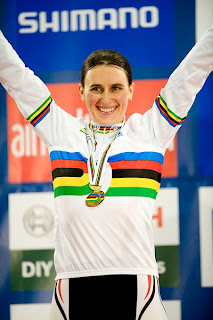Well, this is the last post about our trip to France and it ends with a doozy! The Col du Glandon, 1,611 meters of climbing, 24 km long, with the last 3 km the equivalent of riding up a wall - good thing there was wind up there too to make it a bit more challenging!
This just may have been the best way to end our trip. I was feeling good and strong and had some "carrots" along the way. There was a group of 8 guys who started the climb the same time I did and I chatted to one of them for several minutes, it was great to have a local to answer the questions I had. There had been quite a bit of animal poop, so I was wondering what kind of wildlife lived in these mountains. Apparently there were no bears, but lots of fox; though I didn't see any wildlife on our rides.
Four of the group passed me close to the bottom, but I started to catch each one who would tow me up to about 4 bike lengths to his friend, I would take my turn at the front, and proceed to drop each one; was a pretty good confidence builder. Heading in to Saint-Colomban-des-Villards, roughly the half way mark, I had passed 3 of the 4 riders who had passed me, drafter a mountain biker who was trucking, and been passed by a blue jersey guy with massive legs.
Going through the town it is a little downhill and I ramped it up, passing the blue jersey guy, but then the pitch picked up again and although it wasn't that steep I felt like I hit a wall. I have decided that I prefer when climbs are steady ups; it's tough to adjust to big differences in grade. Needless to say, the blue jersey passed me again and I stayed on his wheel as long as I could until my legs said no more.
The next sections had some switch backs and you could see the riders in front of you, so I became motivated once again to push myself and catch them, and I was feeling really strong - until I hit the 3 km to go point. It is at this moment where the incline turns red, the road becomes vertical, and there was wind, strong wind.
The nice thing about switch backs though is that you may have the head wind for a bit, but then you turn and have the tail wind, but the top of the Glandon was still tough and the last kilometre felt like it took forever. But I made it, as you can see in the picture.
After cresting the Glandon it is only 3 more kilometres to the Col de la Croix de Fer where there was a restaurant and Darin was waiting for me. It feels flat between these 2 summits, but I had nothing left in my legs to push it the extra 3 km and hobbled in. There happened to be a mountain bike race taking place, so as we ate lunch we watched the mountain bikers push there limits at the top of the mountain.
We stopped for some pictures on the way down and then the fun began.
The descents from these big climbs were a lot of fun, though the cars got in the way as they were slower on the turns and didn't always stay in their lanes. I would love to come back and descend with closed roads so I could take the fastest way down the mountain.
Here is a video of part of the descent:
What a great trip! Can't wait to come back next year. We have a place booked for July 7-14, 2013. If you're interested in joining us e-mail me at cyclingcentre@gmail.com.






.gif)




























